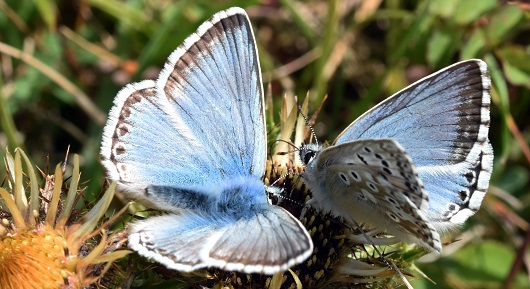New study calls for better information on changes in wild animal populations

Key statistics about the world’s animal and plant life could present a misleading picture about the natural world according to new research from the University of St Andrews.
In their study Professor Steve Buckland of the Centre for Research into Ecological & Environmental Modelling at St Andrews and Dr Alison Johnston of Cornell Lab of Ornithology took a fresh look at The Living Planet Index, the primary global index for biodiversity loss, and the UK priority species indicator and discovered that both fall short of key criteria for monitoring biodiversity programmes.
Professor Buckland said: “The world is currently in the middle of a biodiversity crisis, with substantial reductions in biodiversity in many regions. To understand the changes in biodiversity and develop conservation programmes that will be suitable to mitigate or reverse the losses, it is critical to have good quality surveys that satisfy criteria to produce reliable trends in biodiversity.
“Many of the biodiversity indicators used globally fail to meet these criteria. Standards must be raised if we are to quantify biodiversity changes reliably.”
In the study the authors identify many examples of contradictory information regarding animal or plant species. They demonstrate that two different survey methods can show completely opposite trends – with one indicating population increase and another catastrophic decline.
In the Living Planet Index (LPI), the authors found that the datasets did not form a representative sample for the globe. Europe, for example, is heavily over-represented, as are continental shelves in the North Atlantic. This means the indices represent the changes in the places where there is most data.
Professor Buckland said: “Reweighting the LPI to take account of varying global biodiversity makes a dramatic difference to the index, totally changing the conclusions, yet this weighting fails to address the geographic imbalance. Europe is grouped with Asia in one stratum, and continental shelves where disturbance, pollution and fishing pressure are much greater are grouped with deep ocean in the North Atlantic. Further, the species included in the index are not representative of all species globally.”
Dr Johnston said: “There are still many places and species for which we do not have good information on biodiversity. In some cases there are statistical tools that we can use to account for this missing data, but statistical methods can only take us so far. It is essential that we also assess the ways we collect data.”
In their paper the authors argue that technological advances and greater involvement by the public through citizen science activities can improve the monitoring of biodiversity.
Technological changes which are making a significant difference in quality of information include camera trap surveys, coupled with modelling methods to estimate animal abundance from the resulting data; acoustic detectors in either terrestrial or marine environments; automated software to identify and classify animals in images or recordings; drones to carry out surveys or place cameras or acoustic detectors; and satellite surveys of animal populations.
Citizen science can contribute both through gathering field data like images of plants, butterflies, etc submitted online, where experts can coach contributors and identify images; and through helping to identify animals in large numbers of images or recordings generated by camera traps, by acoustic sensors, or by other citizen scientists in the field.
Dr Johnston said: “Environmental decisions rely on accurate information about the state of biodiversity. We should continue to collect high quality data and create the best measures we can about the natural world. However, it’s also important that we recognise the weaknesses of each metric and that we continually search for ways to improve the data we collect and the statistical methods used to analyse them.”
NOTES TO NEWS EDITORS/INTERVIEW REQUESTS
‘Monitoring the biodiversity of regions: key principles and possible pitfalls’ by S T Buckland and A Johnston is published in Biological Conservation: DOI 10.1016/j.biocon.2017.07.034
Professor Buckland is available for interview via the Communications Office – contacts below.
St Andrews has an in-house ISDN line for radio and a Globelynx camera for TV interviews. To arrange an interview please contact the Communications Office in the first instance.
NOTES TO PICTURE/ONLINE EDITORS
Issued by the University of St Andrews Communications Office. Contact Steve Bargeton, on 01334 467310 / 01334 462530 / 07802376860 or [email protected].
Category Research